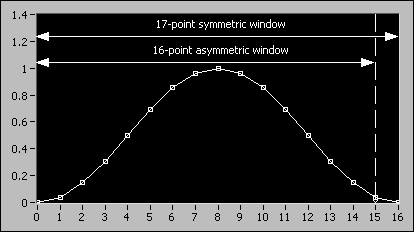Symmetric Window VI
Owning Palette: Windows VIs
Requires: Full Development System
Applies a symmetric window to the input sequence X. Wire data to the X input to determine the polymorphic instance to use or manually select the instance.
Use the pull-down menu to select an instance of this VI.
 Add to the block diagram Add to the block diagram |
 Find on the palette Find on the palette |









